| The subject of this article is from the Endurance update.
The information from this article is up-to-date as of 6 October, 2022. |
The information from this article is up-to-date as of 6 October, 2022.
| This page fills the role of Headquarters for a Company organization. The information found here represents a user-created Company that is a creative addition to the game. |
| BSO Botanical Society | |
|---|---|
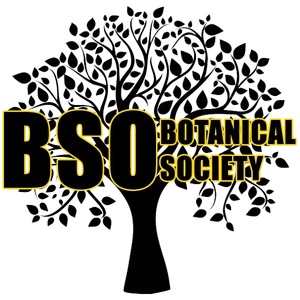
| |
| Galaxy | Euclid |
| Quadrant | Delta |
| Region | Tejeti Cloud |
| HQ System | Rerkungan |
| Headquarters | Gortle Sigma |
| Founded by | Juseppe I of Italo |
| Founded by | Juseppe001 |
| Type | LP |
| Specialisation | Botany |
| Services | Documentation, Agriculture |
| Federation member | No |
| Platform | PS4/Xbox/PC |
| Updated | Endurance |
BSO Botanical Society is a company.
Summary[ | ]

Black Star Order emblem.
BSO Botanical Society is a non-profit, scientific research company in No Man's Sky owned by the Black Star Order.
It is based in the Tejeti Cloud region of the Euclid galaxy.
Mission[ | ]
The BSO Botanical Society deals with studying strange and unique scannable flora and promoting sustainable agriculture, cooperating with multiple organizations across the Universe.
Partnerships[ | ]
The BSO Botanical Society officially maintains partnerships with the following Civilizations and Companies:
- Black Star Order - The Order owns and manages the Society
- Wild Space
- Sepros Alliance Industries
At one time, the Society was part of the now disbanded Galactic Corporate Trust.
Location[ | ]
Headquarter[ | ]
Company headquarters are located on planet Gortle Sigma, Rerkungan star system.
Star Systems[ | ]
The Company discovered the following Star systems:
| System | Region | Color | Economy | Faction | Planets | Moons | Platform | Release |
|---|---|---|---|---|---|---|---|---|
| Siselbur | Dihirng | Red | Uncharted | 3 | 0 | PS4 | Living Ship | |
| Tobana | Lelovae Sector | Yellow | Metallurgy | Gek | 1 | 0 | PS4 | Living Ship |
| Gourdosae | Nityrita Quadrant | Yellow | Prospecting | Korvax | 2 | 0 | PS4 | Living Ship |
| Eferend | Osbuyters Expanse | Blue | Research | Gek | 1 | 2 | PS4 | Living Ship |
| Dudley-Jioki | Ushonsi Instability | Yellow | Mining | Vy'keen | 1 | 0 | PS4 | Living Ship |
Employees[ | ]
| Member name | PC/PS/XB/NS | Homeplanet | Role |
|---|---|---|---|
| Juseppe001 | PS4 | Gortle Sigma | CEO |
| Goro | PS4 | Gortle Sigma | Agronomist |
| HeadMaster111 | PC | In Scola | Researcher |
| ErSantone | PS4 | Opronn Prime | Researcher |
Documented Flora[ | ]
| Image | Name | Biome | Researcher Notes | |
|---|---|---|---|---|
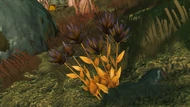
|
J. Lusttarium | Lush | The structure of the flower stem allows it to launch its thorny petals when subjected to a situation of strong stress, such as when touched. | |
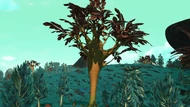
|
X. Berrisooe | Lush | Taking advantage of the phenomenon of water capillarity, this mighty tree manages to preserve a reserve of water in the upper part of its trunk, much closer to the leaves. | |
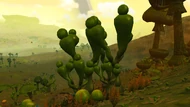
|
C. Duckhylium | Toxic | Stinging Hair - The toxic atmosphere of its home planet has endowed this specimen with a layer of acid and stinging hair, making it dangerous to the touch. | |
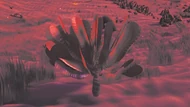
|
G. Sourudeus | Mega Exotic - Extreme | Its name means "praying shrub" in Vy'keen language; this is due to the fact that its leaves, vibrating with the passage of the wind, produce a curious murmur similar to a well-known Vy'keen litany. | |
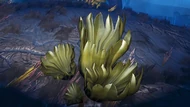
|
L. Tinmegae | Mega Exotic - Extreme | Born from the symbiotic fusion between an alga and a fungus, it belongs to the lichen family and represents the link between the world of plants and that of fungi. | |
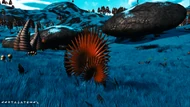
|
L. Elderfrus | Lush | The large leaves allow this plant to absorb as much light as possible, maximizing the efficiency of the photosynthesis process. | |
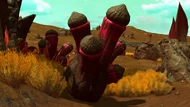
|
O. Glurexeus | Scorched | It seems to be able to prevent pest attacks and resist the high temperatures of its planet by altering its own molecular structure, making it one of the most mysterious and fascinating life forms ever discovered. It is supposed to be an ultra-dimensional life form, probably coming from another Galaxy. | |
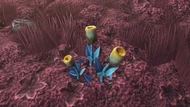
|
G. Hangahum | Lush | Once these flowers are pollinated, their own petals begin to swell, slowly turning into juicy fruits with a sweet-bitter taste, similar to certain Gek candies. | |

|
G. Meltcegosa | Barren | It represents a curious form of evolutionary adaptation to a dry climate; to minimize water dispersion, this plant produces a single flower without petals and with a conical and pointed shape on the top of its stem. | |
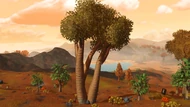
|
P. Dryientii | Lush | A majestic speciemen, tall and long-lived. It could be said that it grows "upside down": to survive, instead of growing more branches and leaves, it develops multiple trunks in which to store greater quantities of nutrients. | |
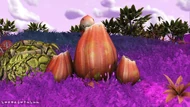
|
E. Fumeeuae | Lush | Its hollow shell shape allows it to store rainwater directly inside. Stagnant water then attracts many insects which end up creating colonies within the plant itself. | |

|
E. Grouteysica | Lush - Extreme | Also called "Stone Fungi" by the Korvax, the hyphae of these mushrooms are covered with a resistant layer of limestone which allows them to survive in extremely acidic soils. | |
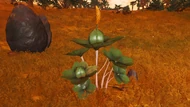
|
B. Mouthkudoe | Lush | The articulated roots of this specimen literally allow it to move from place to place in search of particular substances; this occurs when the ground is soft enough, such as after rains. The fruits of this plant are not edible. | |
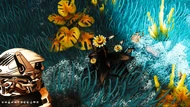
|
O. Eastaebeum | Lush | Despite its extremely powerful aroma, it seems to be highly appreciated as a gift by female Korvax entities. This is probably possible because of their lack of an olfactory system. | |

|
B. Eatriryera | Lush - Water | A particular genus of mould, one of the largest and longest-lived species ever observed. It thrives on the ocean floor, feeding on dead organisms. Large clusters of this mould may indicate the location of ancient underwater fossils. | |
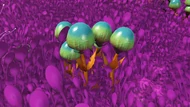
|
B. Spantuyrera | Lush | After pollination, the reproductive spores begin to develop inside the pistil and, once mature, they will literally be "shot" from the flower at a speed of about 10 u/s and up to a distance of 11 units. This is possible due to the strong pressure that develops inside the pistil after the spores mature. | |
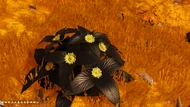
|
P. Jossahurtera | Lush | The black coloration of its leaves permit it to survive during the massive boiling storms typical of its home planet. In the academic world it is traditionally known as "Graphite Bush". | |
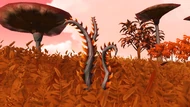
|
K. Dustnayum | Lush | The leaves of this vine specimen have evolved specifically to take the form of large and sharp thorns, almost resembling real teeth, in order to discourage herbivorous animals from feeding on them. | |
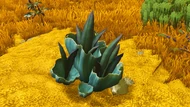
|
E. Westgavosa | Lush | Prolonged exposure to light and limited hours of darkness seem to have harmful effects on this turgid plant. After careful analysis, it was discovered that its cells prefer to exploit the Calvin Cycle to produce the molecules they need to survive, also known as the "dark cycle" of chlorophyll photosynthesis. | |
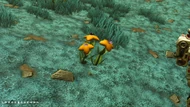
|
Q. Warturnii | Lush | A small flower with a sweet scent. Its soft leaves, left to dry for a few days and boiled in sugary water, produce a tea with a magnificent aroma. | |
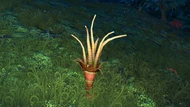
|
Z. Trinmegea | Lush | Conical structures, resembling straws, grow vertically from the stem of the plant. These structures are covered with small holes designed to collect and absorb the drops of dew that form on the stem during the night. | |
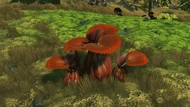
|
G. Trustlae | Lush | A squat and hard-barked plant. It produces flat and wide fruits covered with stinging lint and thin thorns. Furthermore, its reddish color seems to instinctively attract the fauna of its home planet; when the animal touches the plant, the fruits remain attached to its skin or fur, allowing the seeds contained in the fruits to be transported to different places by the animal. | |
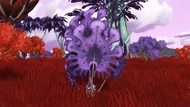
|
Q. Sekyripiria | Lush | A curious specimen of palm tree whose leaves have evolved in order to resemble the face of a particular predator feared by the herbivores of his home planet. Through this stratagem, the plant often manages to prevent herbivores from feeding on its leaves and stem. | |
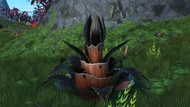
|
I. Horsehajea | Lush | The cone structure allows it to store large quantities of rainwater. If the excessive quantity of water threatens the stability of the stem, the plant is able to expel it by releasing high pressure gas, "throwing" it into the air. This process has earned it the nickname "fountain fern". | |
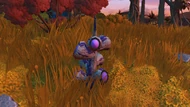
|
R. Coastagea | Lush | A specimen, to say the least, curious; short structures grow along its stem and act as "eyes". These structures, in fact, are able to perceive rapid changes in the surrounding brightness, sensing the presence of any nearby creatures and thus allowing the plant to withdraw into the soil. | |
